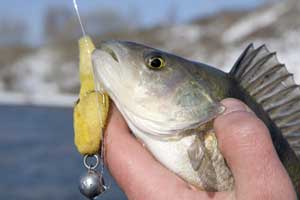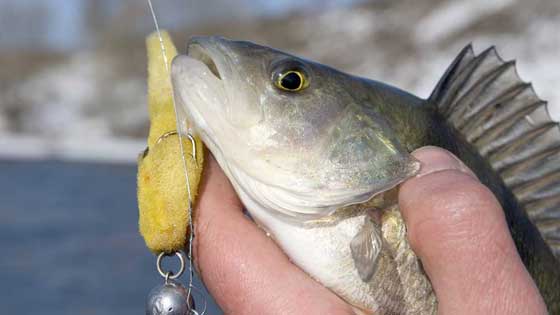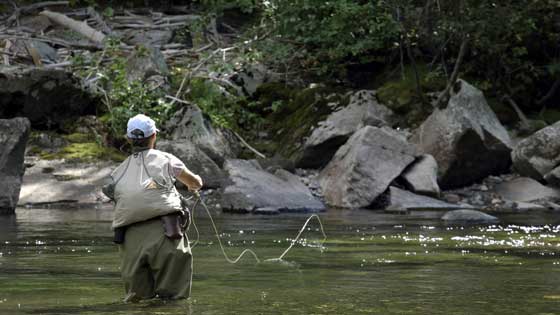Fishing Tackle – Leaders

Like any other piece of tackle, fishing leaders are an important addition to your tackle box. It can mean the difference between landing a good sized bass, or losing your tackle and sinker.
There are many debates as to which type of leader to use. Some advocate wire while others prefer monofilament leaders.
Solid wire leaders are the most abrasive resistant leaders, but not all situations require a metal leader.
So which type of leader is best?
This is dependent on the type of debris or structure that’s causing the abrasion. Balance this requirement with what’s needed to capture the fish. No sense using a wire leader when trying to catch Rock Bass.
We’ve an overview here of some of the critical things you need to know about fishing leaders.
|
|
Monofilament Leaders
Many youngster and amateur anglers usually opt for the wire leader first. However the nylon monofilament is much better suited for most situations.
Advantages of monofilament leaders include
- it’s high tensile strength
- resistance to abrasion
- sufficient elasticity for shock absorption
- ease of handling
- it’s transparency
- variety, color
- affordability
As strong as this leader is, it’s made of nylon and can easily be cut by sharp underwater debris such as old cars, ships and pop cans. If you have your heart set on catching a fish with sharp teeth, we recommend going with a wire leader.
Multifilament leaders
Climax Leader Systems introduced a braided multifilament leader from a new material named Duramax. This material offers a higher degree of strength over the monofilament leader by as many as 3 times.
A 8X Duramax tippet tests 5 pounds, which is as strong as a monofilament at #4X or 3X.
However, while Duramax is much stronger, it takes some experience to tie knots. We recommend practicing a little before a trophy fish runs off with the bottom end of your line.
Another downside is the cost of the multifilament leader. It’s generally more expensive.
Wire Leaders
Pros
- Wire is a lot tougher and will stand up to pretty much any of the sharp objects that will tear the monofilament leader
- It’s not affected by chemical deterioration
Cons
- Wire leaders are more restrictive and can limit the movement of the lure or bait
- It’s visible and hard to hide
- Wire leaders are more affected by line twisting, kinking, setting and failure due to fatigue and can’t be knotted
*Because of these limitations, it’s best restricted to those situations where it has clear advantages over nylon leaders.
Carbon steel piano wire is the stiffest, strongest and has the smallest diameter of the leaders. However as it’s susceptible to corrosion, it’s not very popular anymore. Carbon steel was replaced by stainless steel as it doesn’t corrode.
Brass leaders are available and while they won’t rust in freshwater, brass is soft and weaker than the other two options. As we’ve recommended in the past, stay away from anything brass as it doesn’t hold up due to its softness.
Fly Leaders
Fly leaders are tapered at one end and they’re generally very thin and considered necessary for fly fishing.
For the leader to turn over the fly it has to be thicker at one end to give the required stiffness and thin enough at the other end for the fly to connect.
A well-designed fly leader enables fly delivery with precision.
Fly leaders transfer energy from the fly line to the fly in a predictable manner.
The leader and knots are the most fragile link between you and your fish. Frayed leader material, tangles, wind knots or a badly tied knot can release your trophy prematurely. Be sure to check your leader and knots constantly while fishing. Any problem areas should be repaired as soon as they ‘re noticed.
Using the same diameter leader from the fly line to the fly will create several problems.
- The leader’s job is to straighten out and flip the fly far away from the tip of the fly line.
A thin leader allows the fly to drift.
Tip: For novice fly anglers, knowledge of fishing knots is the most important skill. Fail to get this right and you’ll lose all your gear and none of the other tips will matter.
Trolling Leaders
Like fly anglers, trollers always use a leader because they troll with heavy sinkers and need to run their bait level with monofilament leaders of 50 to 100 feet.
Leaders are most often tapered with the 2 leaders. The long leader is usually attached to the trolling rig. There’s no one way to set up a leader for trolling.
Solid Wire
Solid and single strand wire is sold as both trolling and leader material. Hard-drawn, tempered leader wire is very strong and has the smallest diameter of any leader for it’s test strength. Non-tempered wire is used for trolling lines and is soft drawn.
Being soft drawn, the wire is easy to handle and workable but it has the tensile strength of the monofilament. If made into a leader it will bend and curl, essentially destroying the lure action.
Stranded Wire
There are 2 types of stranded wire leaders.
- stranded wire leader
- nylon coated stranded wire leader
Both types are more flexible than the solid wire leader. Both are thicker with the nylon coated one being even thicker than the standard stranded wire leader. They’re shallow running and suffer less from kinking and fatigue.
Because the nylon coated leaders are less susceptible to fraying, we recommend this leader over all other wire leaders.
Twisted Wire
The most common form of twisted wire is the 7 strand wire, which is made up of 7 strands of wire twisted together. However, don’t mistake this as a cable, which we’ll cover below.
Test strengths range from 18 to 250 pounds and the diameter varies accordingly. When strands fray or twist, they lose their strength and should be replaced.
Snells
A hook snell is monofilament leader tied directly to a hook.
Why use a snell leader?
The snell ensures that the setting force is applied along the shank. This results in a line of penetration that the hook is designed for. Otherwise there’s no telling where the line of penetration will be once the hook is set.
Cable-Laid Wire
Cable wire leaders are made up from several wire strands twisted into a bunch with those bunches twisted into a cable. They’re considered highly flexible and strong.
Cable wire leaders are most susceptible to fraying of all the metal wire leaders. However these leaders have a niche. They’re designed for anglers trolling for fish over 20 feet deep and need a line that is strong, thin and adverse to kinking.
Light Leaders
A light leader is simply a leader that is finer in diameter and lighter in test than the main fishing line. They’re made of monofilament.
Light leaders are useful when more movement or freedom is required for the lure or to provide an invisible leader for species like Roanoke Bass, which tend to stay away from visible leaders.
By reducing the test you may need to reduce the drag on your reel to prevent a broken leader and lost lure.
Bite Leaders
Bite leaders are common in saltwater fishing as many fish there have sharp teeth. Bass, trout and salmon don’t require bite leaders. Most bite leaders are no more than 2 feet long.
Shock Leaders
Shock leaders is the name given to all leaders designed to take physical abuse without failing. Abuse can range from abrasion, sharp teeth, high tensile stress and high impact biting.
Overload Leaders
When fishing from bridges, piers or any other structure that’s high off the water, use a monofilament leader that is strong enough to enable you to reel in the largest fish that you’re likely to catch.
A net is best as reeling a fish through the air causes undue stress on your gear.
Other situations where you might want to yank a fish out of the water would also require an overload leader. Now you won’t literally yank the fish out of the water, but you’ll use the reel to drag, or yank, the fish around to tire it.
Abrasion Leaders
These are leaders designed to protect your lure from underwater structures that rub up against the line and causing wear such as wrecks, rocks, pilings, docks, abutments, shellfish, brush pilings and sunken debris.




